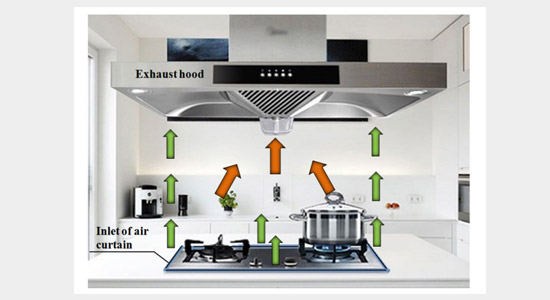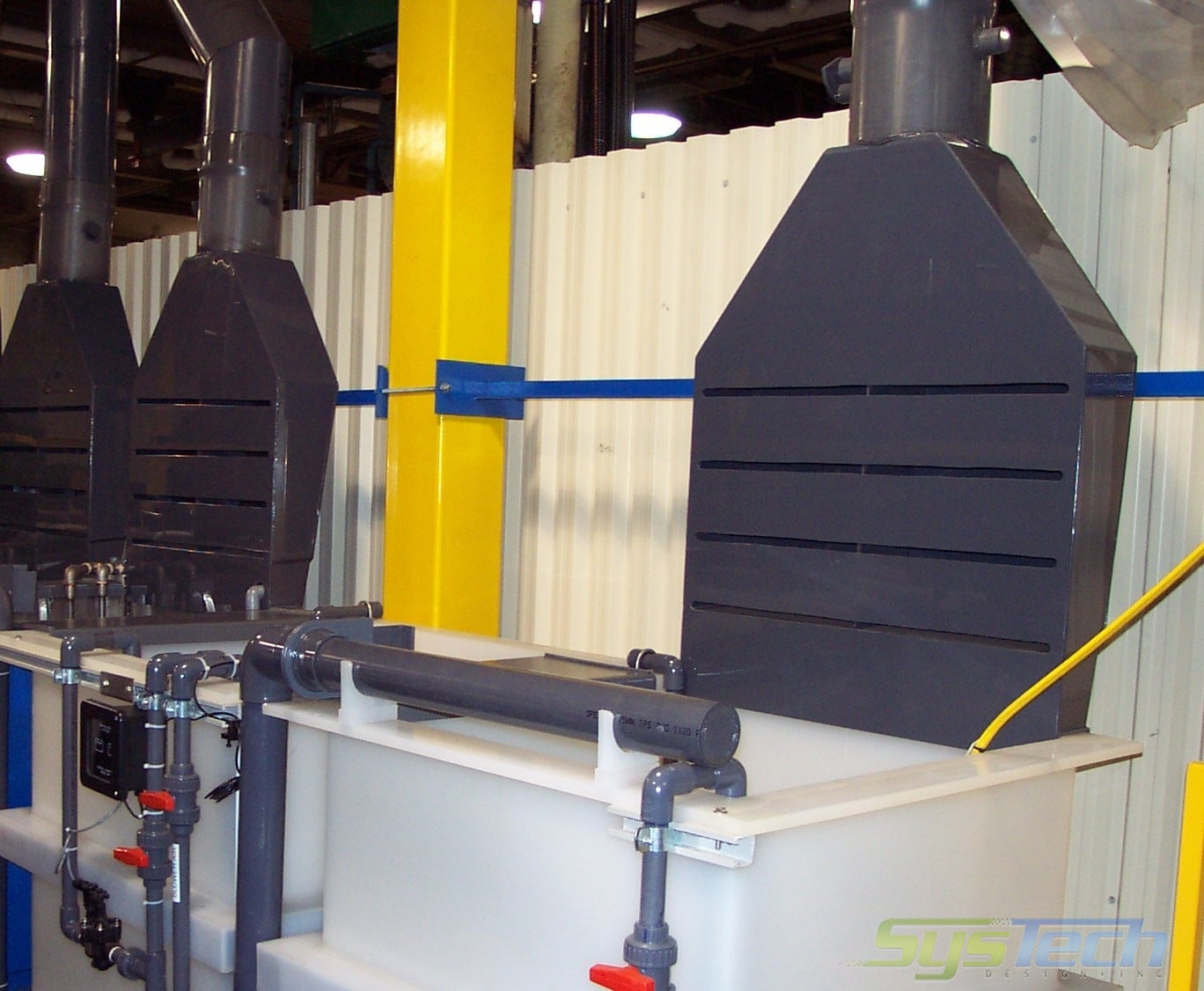Slot Hood Exhaust Design
Sometimes it seems that almost everything in a laboratory is governed by an alphabet soup of government agencies and regulations. We are all familiar with the acronyms OSHA, EPA, NIOSH, and FDA and how they impact our labs. It’s the same with fume hoods. Their installation, operation and maintenance are guided by a variety of governmental and industry organizations. Fortunately, understanding who and what determines proper fume hood operation is not as difficult as it might first seem.
Hood design Proper design of exhaust hoods is a must If you want effectively control athmospheric contanimation at its source with minumum air flow and power consumption.The theory of capture velocity depends on the creation of air flow past the source of contaminant sufficent to remove highly contaminated.
Hoods achieve a uniform distribution of airflow along the entire slot length which is a crucial element in avoiding sheet breaks. Each hood is bench tested to verify uniform airflow. Designed to avoid capturing larger breakout sheet material (no need for inline paper traps). We can provide the type of exhaust hood required for your particular application whether it be an updraft style hood with multiple slots or a low profile, lip style exhaust hood which typically runs the counter direction of travel on most process lines. Ufc 3-410-04 13 december 2017. Unified facilities criteria (ufc) industrial ventilation. Approved for public release; distribution unlimited.
Codes, Standards and Recommended Practices
The following are the primary organizations and standards regarding fume hoods:
–OSHA Part 1910.1450. OSHA stands for Occupational Safety and Health Administration. The agency regulations regarding fume hood operation are listed in the Code of Federal Regulations Volume 29 Part 1910.1450. This code addresses several aspects of laboratory design and operation. Regarding hoods it is primarily concerned with airflow at the face of the hood, monitoring, maintenance and exhaust.
–ANSI/ASHRAE 110-1995. Method of Testing Performance of Laboratory Fume Hoods. This standard is published by the American National Standards Institute and the American Society of heating, Refrigerating and Air Conditioning Engineers, Inc. It concerns itself primarily with methods of testing fume hoods to check their operation.
–ANSI/AIHA Z9.5. Titled “The American National Standard for Laboratory Ventilation” this standard is published by ANSI and the American Industrial Hygiene Association. It covers a variety of lab ventilation issues including hood monitoring, face velocities and exhaust.
–NFPA 45. This standard is prepared by the National Fire Protection Association. It recommends hood construction, location, fire protection, specialty hoods, identification, inspection, testing and maintenance and exhaust.
–SEFA 1.2-1996. SEFA is the Scientific Equipment & Furniture Association. Its publication “Laboratory Fume Hoods Recommended Practices” covers design requirements of hoods, face velocities and testing.
Special Concerns
Items of immediate interest to lab personnel that are addressed in the codes and standards include:
- Air flow
- Monitoring/Alarms.
- Maintenance/Inspection.
- Exhaust.
1. Air Flow
Proper air flow at the face of the hood is probably the most common cause of confusion regarding fume hood operation. Here are what the codes and standards say:
OSHA: “General air flow should not be turbulent and should be relatively uniform throughout the laboratory, with no high velocity or static areas; air flow into and within the hood should not be excessively turbulent; hood face velocity should be adequate. (Typically 60-110 fpm.)”
ANSI/AIHA Z9.5: “Each hood shall maintain an average face velocity of 80-120 fpm with no face velocity measurement more than plus or minus 20% of average.”
SEFA: “Face velocities of laboratory fume hoods may be established on the basis of the toxicity or hazard of the materials used or the operations conducted within the fume hood. Note: Governmental codes rules and regulation may require specific face velocities. A fume hood face velocity of 100 fpm is considered acceptable in standard practice. In certain situations face velocity of up to 125 fpm or as low as 75 fpm may be acceptable to meet required capture velocities of the fume hood.”
2. Monitoring/Alarms
Many older labs are equipped with fume hoods that do not have air flow monitoring devices. The type of device is not specified, but according t the following codes and standards if you’re putting in a hood or remodeling an older one they are now a requirement.
OSHA: “….each hood should have a continuous monitoring device to allow convenient confirmation of adequate hood performance before use. If this is not possible, work with substances of unknown toxicity should be avoided or other types of local ventilation devices should be provided.”
ANSI/AIHA Z9.5: “New and remodeled hoods shall be equipped with a flow-measuring device.”
NFPA 45: “New and remodeled hoods shall be equipped with a flow-measuring device.
3. Maintenance/Inspection
As with all equipment maintenance is important to proper operation.
OSHA: “Quality and quantity of ventilation should be evaluated on installation, regularly monitored (at least every 3 months), and re-evaluated whenever a change in local ventilation devices is made.”
ANSI/AIHA Z9.5: “A routing performance test shall be conducted on every fume hood at least annually or whenever a significant change has been made to the operational characteristics of the system”
NFPA 45: “When installed or modified and as at least annually thereafter, laboratory hoods, laboratory hood exhaust systems, and laboratory special exhaust systems shall be inspected and tested.”
NFPA 45: “Special use laboratory hoods and special use local exhaust systems shall be identified to indicate their intended use.” “A sign shall be affixed to each hood containing the following information from the last inspection: Inspection interval, Last inspection date, Average face velocity, location of fan that serves hood, Inspectors name. Exception: In lieu of a sign, a properly maintained log of all hoods giving the above information shall be deemed acceptable.”
4. Exhaust
The old expression “out of sight, out of mind” is often apt when discussing fume hood exhaust. Lab personnel rarely crawl up onto the roof to check out their exhaust fans and stacks. Knowing what the standards, rules and codes have to say on the exhaust can come in handy if you’re experiencing odors in the lab or if you’re considering a renovation or new facility.
Slot Hood Exhaust Designs
ANSI/AIHA Z9.5: “Discharged in manner and location to avoid re-entry into the laboratory building or adjacent buildings at concentrations above 20% of the allowable concentrations inside the laboratory under any wind or atmospheric conditions.” Exhaust stack: “Be in a vertical up direction at a minimum of 10 feet above the adjacent roof line as so located with respect to opening and air intakes of the laboratory or adjacent buildings to avoid re-entry.”
NFPA 45: “Air exhausted from laboratory hoods and other special local exhaust systems shall not be re-circulated.” “Air from laboratory units and laboratory work areas in which chemicals are present shall be continuously discharged throughout systems maintained at a negative pressure relative to the pressure of normally occupied areas of the building.
If you have any questions feel free to give me, Bruce Ciloski, a call. You can reach me at 832.256.0014 or email me at bruce@laboratorydesign.com.

Hood Design
Problem:
Consider the following hoods:| Plain opening hood with Ce = 0.82 |
| Flanged opening hood with Ce = 0.76 |
| Cone hood with Ce = 0.93 |
 For each hood, SPh is 3' of water and the duct diameter is 6'.
For each hood, SPh is 3' of water and the duct diameter is 6'.Compute the hood entry loss and percent loss in velocity head for the above case. Comment on your results.
Solution:
Ce = (VPd / SPh)1/2
where Ce is coefficient of entry,
VPd is duct velocity pressure,
SPh is hood static pressure.
SPh = he + VPdwhere he is the hood entry loss.
For plain opening hood,
Slot Hood Exhaust Design Software
VPd = SPh * Ce² = 3” * 0.82² = 2.017” wg
he= 3” – 2.017” = 0.983” wg
Percent loss in velocity head = 0.983 / 2.017 = 48.74 %
For flanged opening hood,
VPd = SPh * Ce² = 3” * 0.76² = 1.733” wg
he= 3” – 1.733” = 1.267” wg
Percent loss in velocity head = 1.267 / 1.733 = 73.11 %
For cone hood,
VPd = SPh * Ce² = 3” * 0.93² = 2.595” wg
he= 3” – 2.595” = 0.405” wg
Percent loss in velocity head = 0.405 / 2.595 = 15.61 %
With an increase of Ce, hood entry loss and % loss in velocity decreases.
Cone hood is the better of the three given hoods with only 15% loss in velocity head.Problem:
Find the static pressure of a hood if the velocity pressure is 4.5 'H2O and the coefficient of entry is 0.82.
Solution:
Ce = (VP / SP)1/2
where Ce is coefficient of entry,
VP is velocity pressure,
SP is static pressure.
SP = VP / Ce² = 4.5 / 0.82² = 6.7” of water
Problem:
A 25' wide hood needs a slot velocity of 200 fpm with a 40 cfs volume. What size of slot opening is required?
Solution:
Required area of slot = Q / V = (40 cfs * 60) / (200 fpm) = 12 ft²
Size of slot opening = 12 ft² / (25” / 12) = 5.76 ft = 69.12”
Problem:
Assume the hood static pressure in a 8' duct is 3.0' H2O and the hood manufacturer indicates that Ce is 0.89. What is the estimated flow rate?
Solution:
Hood entry coefficient, Ce = √ (VPduct / SPhood)
So, VPduct = Ce ² * SPhood = 0.89² * 3 = 2.376 “wg
Vduct = 4005 * √VPduct = 6173.42 fpm
Q = Vduct * A = 6173.42 * [π * (8/12)² / 4] = 2154.93 cfm
Problem:

Assume a hood is exhausting 3,000 cfm of air and the hood static pressure was measured at 2.17' w.g. Three months later the hood static pressure is 5.0 ' H2O. Assume continued standard conditions (55oF & 29.92' H2O). Calculate, by how much the air flow through the duct has been reduced?
Solution:
For standard air, Q = 4005 A Ce √ SPhood
For the same hood, Q is proportional to √ SPhood
So, Q2 = Q1 (√ SPhood, 2 / √ SPhood, 1) = 3000 (√ 5 / √ 2.17) = 4553.83 cfm
Increase in air flow rate = (4553.83 – 3000) = 1553.83 cfm
% Increase in air flow rate = (4553.83 – 3000) / 3000 = 51.8 %
Problem:
Compare the flow rate for a lateral hood located at the edge of an open surface tank (4ft*3ft) with the rate for a canopy hood located 3 ft above the tank. The tank contains a solution of ammonium phosphate in water at 250oF. Ammonia gas is released from the tank. State your assumptions.
Solution:
Lateral Hood:
Q = V (10 X² + A)
where, Q = Air Flow (cfm), V = Centerline Velocity at X distance from hood (fpm)
X = Distance of source from edge along axis (ft), A = Area of hood opening (ft²)
Assumptions: Capture Velocity = 75 fpm, Hood Dimensions = 4 ft by 3 ft (same as tank)
V = 75 fpm, X = 0 (hood at edge of tank), A = 4 * 3 = 12 ft²
Q = 75 * 12 = 900cfm
Rectangular Canopy Hood:
Height of hood above tank = 3 ftLow Canopy Hood required.
Q = 6.2 * b1.33 * Δt0.42 * L
where, Q = Air Flow (cfm), b = Width of hood (ft),
Δt = Difference in source and ambient temperature (F), L = Length of hood (ft)
Assumptions: Hood Dimensions = 4 ft by 3 ft (same as tank)
b = 3 ft, L = 4 ft, Δt = (250 – 70) = 180 F
Q = 6.2 * 31.33 * 1800.42 * 4 = 946.75 cfm